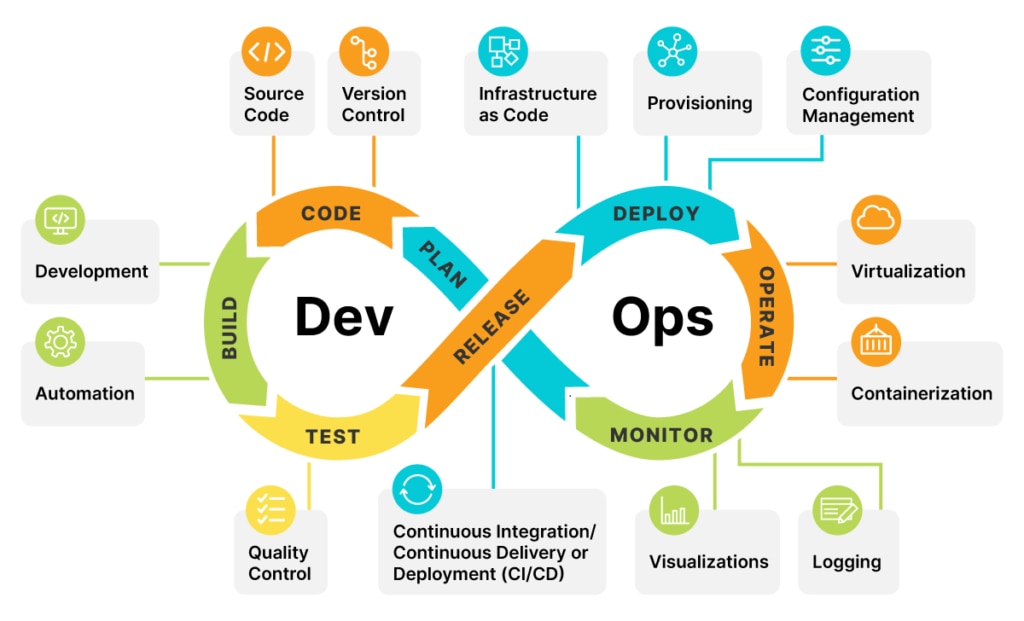DevOps Basics for Beginners
Hop on for Devops adventure with our beginner-friendly guide!

Welcome to the exciting world of DevOps, where development and operations come together to create a seamless and efficient software development lifecycle. If you’re just starting out on this journey, you’re in the right place. We’ll walk you through the basics, step by step, in plain and simple language.
What is DevOps Anyway?
DevOps is not just a buzzword; it’s a culture, a set of practices, and a mindset that aims to enhance collaboration and communication between development (the folks who write code) and operations (the folks who manage infrastructure and deployment). It’s all about breaking down silos, automating processes, and ultimately delivering better software faster.
The Three Pillars of DevOps
-
Collaboration: DevOps fosters a culture of teamwork. Developers, operations, and other stakeholders work hand-in-hand to achieve common goals. This means sharing knowledge, brainstorming solutions, and celebrating successes together.
-
Automation: Imagine a world where repetitive tasks are handled by machines, allowing humans to focus on more creative and critical tasks. That’s the power of automation in DevOps. From code deployment to testing and monitoring, automation is the secret sauce that makes everything run smoothly.
-
Continuous Integration, Continuous Deployment (CI/CD): This is the heartbeat of DevOps. Continuous Integration (CI) ensures that code changes are frequently merged into a shared repository. Continuous Deployment (CD) takes it a step further by automatically releasing code changes to production. This results in a faster, more reliable release process.

Key Concepts in DevOps
Version Control
Imagine you’re working on a group project and everyone is editing the same document. Chaos, right? That’s where version control steps in. It allows multiple contributors to collaborate on code without stepping on each other’s toes. Git is the most popular version control system out there, and it’s a must-know tool for any DevOps practitioner.
Containers
Containers are like portable packages for software. They bundle up an application along with its dependencies, ensuring it runs consistently across various environments. Docker is the go-to tool for containerization, making it easy to develop, deploy, and scale applications.
Orchestration
When you have a bunch of containers working together, you need a system to manage and coordinate them. That’s where container orchestration tools like Kubernetes come into play. They ensure that your containers are deployed, scaled, and managed efficiently.
Monitoring and Logging
DevOps doesn’t stop after deployment. It’s crucial to monitor your applications and infrastructure to catch issues early. Tools like Prometheus for monitoring and ELK Stack (Elasticsearch, Logstash, Kibana) for logging are your best buddies in this domain.
Getting Started
So, how do you dive into the world of DevOps? Start by setting up a development environment and get comfortable with version control using Git. Experiment with Docker to containerize your applications, and explore container orchestration with Kubernetes. Don’t forget to explore CI/CD pipelines, and familiarize yourself with monitoring and logging tools.
Remember, DevOps is not just about tools; it’s a mindset and a way of working. Embrace the culture of collaboration, automate wherever you can, and always strive for continuous improvement.
Happy DevOps journey, and may your deployments be swift and your code bug-free!

Add comment
@name